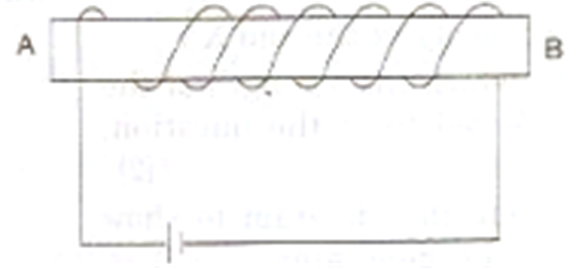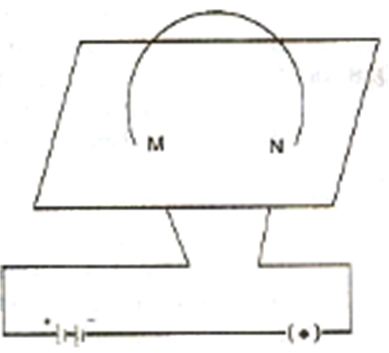A device is used to transform 12 V a.c. to 200 V a.c.
i) What is the name of this device?
ii) Name the principle on which it works.
i) Step Up Transformer.
ii) Faraday’s Law of Electromagnetic Induction.
A device is used to transform 12 V a.c. to 200 V a.c.
i) What is the name of this device?
ii) Name the principle on which it works.
i) Step Up Transformer.
ii) Faraday’s Law of Electromagnetic Induction.
i) Why does a current carrying, freely suspended solenoid rest along a particular direction? [2]
ii) State the direction in which it rests.You have been provided with a solenoid AB.

i) What is the polarity at end A.
ii) Give one advantage of an electromagnet over a permanent magnet.i) Draw a simple labelled diagram of a d.c. electric motor?
ii) What is the function of the split rings in a D.C motor?
iii) State one advantage of a.c. over d.c.?Name a common device that uses electromagnets.
Name two factors on which the magnitude of an induced e.m.f. in the secondry coil depends upon?
In the following diagram an arrow shows the motion of the coil towards the bar magnet.
1. State in which dirction the current flows, A to B or B to A?
2. Name the law used to come to the conclusion.i) What is an a.c. generator or dynamo used for?
ii) Name the principle on which it works?The diagram below shows a current carrying loop or a circular coil passing through a sheet of cardboard at the points M and N. The sheet of cardboard is sprinkled uniformly with iron fillings. 
i) Copy the diagram and draw an arrow on the circular coil to show the direction of current flowing through it.
ii) Draw the pattern of arrangement of the iron fillings when current is passed through the loop.Give two differences between a d.c. motor and an a.c generator.
Mock Test Series